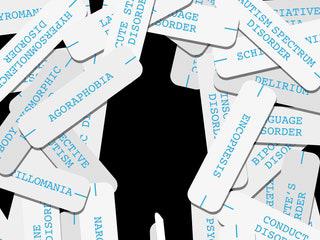Why We’re Turning Psychiatric Labels Into Identities

2024-05-06 4206词 晦涩
No sector of human activity is as serious about naming, or as intent on respecting natural kinds, as science. Across centuries of debate and revision, fields such as physics, chemistry, and biology have refined nomenclatures to better align with the natural order. Psychiatry, at first, looks like another success story. Years of research and clinical observation have yielded catalogues of presumed mental dysfunction, culminating in the Diagnostic and Statistical Manual of Mental Disorders, or DSM. First produced by the American Psychiatric Association seven decades ago, and currently in its fifth edition, the DSM organizes conditions into families such as “anxiety disorders,” “sexual dysfunctions,” and “personality disorders.” Each diagnosis is described by clear criteria and accompanied by a menu of information, including prevalence, risk factors, and comorbidities. Although clinicians and researchers have understood the DSM to be a work in progress, many had faith that the manual’s categories would come to approximate natural kinds, exhibiting, as the Columbia psychiatry professor Jerrold Maxmen put it in 1985, “specific genetic patterns, characteristic responses to drugs, and similar biological features.”
免责声明:本文来自网络公开资料,仅供学习交流,其观点和倾向不代表本站立场。